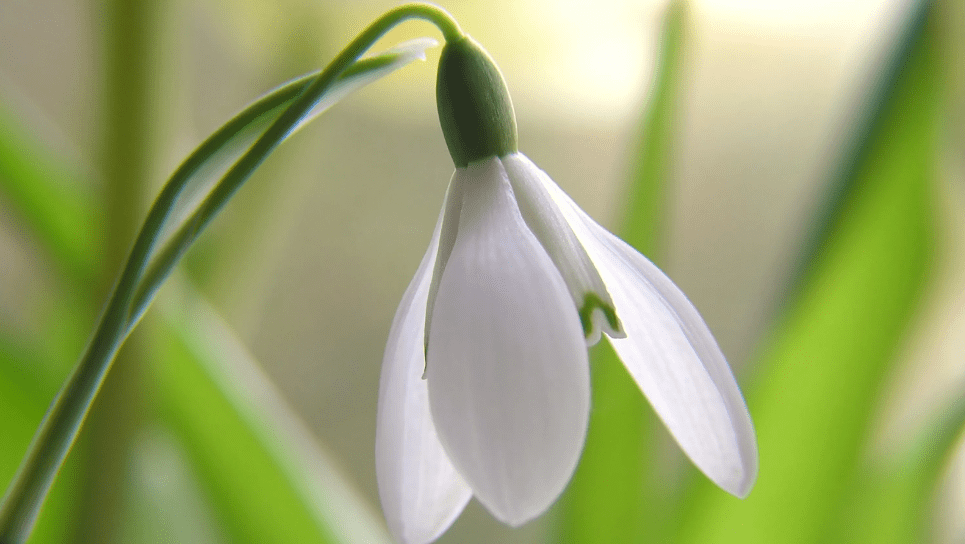
Snowflake Flower Care: Tips for Growing Beautiful Blooms
Snowflake flowers are a stunning addition to any garden, but they require specific care and attention to thrive. In this post, we’re going to share expert tips and advice on how to care for snowflake flowers, so you can grow beautiful blooms and enhance the beauty of your garden. Whether you’re a seasoned gardener or just starting out, this article has everything you need to ensure your snowflake flower flourish. So, grab your gardening gloves and let’s get started on creating a stunning snowflake flower garden!
Table of Contents
ToggleUnderstanding the Snowflake Flower
A. Botanical Characteristics
Snowflake flowers, also known as Leucojum, are a delicate and dainty flower that typically blooms in late winter or early spring. They are renowned for their white, bell-shaped flowers that resemble delicate snowflakes, hence the name. These flowers thrive in moist, well-drained soil and prefer partial shade, making them a perfect addition to woodland gardens or shady spots in your yard.
1. Common varieties and their differences
There are several common varieties of snowflake flowers, including the Leucojum aestivum, Leucojum vernum, and Leucojum autumnale. Each variety has its own unique characteristics, such as the size and shape of the flowers, as well as when they bloom. By understanding the differences between these varieties, you can select the best option for your garden and ensure a stunning display of snowflake flowers throughout the year.
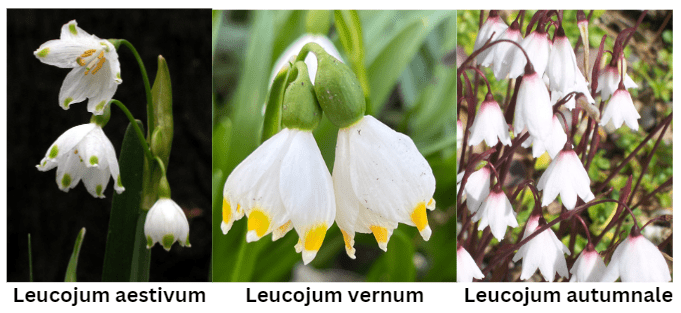
B. Native Habitat
Snowflake flowers are native to Europe and parts of the Mediterranean, where they can be found growing in damp, shady woodlands and along streams and riverbanks. Their natural habitat provides the perfect conditions for these delicate flowers to thrive, and by mimicking these conditions in your own garden, you can create an ideal environment for them to flourish. Choosing native plants like snowflake flowers for your garden not only adds beauty but also contributes to the overall health and biodiversity of the ecosystem. By incorporating these beautiful and resilient flowers into your garden, you can create a stunning and sustainable landscape that benefits both you and the environment.
Ideal Growing Conditions
A. Soil Requirements
Snowflake flowers thrive in well-drained, fertile soil that is rich in organic matter. They prefer slightly acidic soil with a pH level between 6.0 and 6.5. It’s important to ensure that the soil is consistently moist but not waterlogged, as these flowers do not do well in overly wet conditions. By providing the right soil conditions for your snowflake flowers, you can ensure that they have the best chance of thriving and producing an abundance of beautiful blooms. So, why settle for anything less than the perfect growing conditions for these stunning flowers? Choose the right soil for your snowflake flowers and watch them flourish in your garden.
B. Light Conditions
Snowflake flowers require full sun to partial shade for optimal growth. It’s important to place them in a location where they will receive at least 6 hours of direct sunlight each day. However, if you live in a particularly hot climate, they may benefit from some afternoon shade to protect them from intense heat. By providing the ideal light conditions for your snowflake flowers, you can ensure that they receive the necessary energy to produce vibrant and healthy blooms. Don’t let your flowers miss out on the sunlight they need to thrive. Give them the perfect light conditions and watch them flourish in your garden.
C. Temperature and Climate
Snowflake flowers thrive in cooler temperatures, making them perfect for gardens in regions with mild climates. They can tolerate some heat, but prefer temperatures between 50-70 degrees Fahrenheit. If you live in a warmer climate, consider planting them in a location with afternoon shade and providing them with plenty of water to keep them cool. Don’t let the heat scorch your beautiful snowflake flowers. Give them the right climate and temperature conditions to ensure they thrive and bring beauty to your garden all season long.
Planting Snowflake Flowers
A. When to Plant
Snowflake flowers are a beautiful addition to any garden, but they thrive best in cooler temperatures. If you want to see these delicate blooms flourish, it’s important to plant them at the right time. Spring is the perfect time to plant snowflake flowers, as the temperatures are still mild and they have plenty of time to establish themselves before the heat of summer sets in. By planting these stunning flowers in the spring, you give them the best chance to thrive and bring beauty to your garden all season long. So, don’t wait any longer. Plant your snowflake flowers now and enjoy their beauty for months to come.
B. Planting Technique
1. How to prepare the soil
First, make sure to choose a well-draining location for your snowflake flowers. Remove any weeds or debris from the area and loosen the soil to a depth of at least six inches. Add some organic matter, such as compost or peat moss, to improve the soil’s texture and fertility.
2. Planting depth and spacing
When planting your snowflake flowers, be sure to plant them at the appropriate depth, which is typically around 1-2 inches deep. Be sure to space the bulbs about 4-6 inches apart to allow for proper growth and spread. This will ensure that your snowflake flowers have enough room to thrive and show off their stunning blooms.
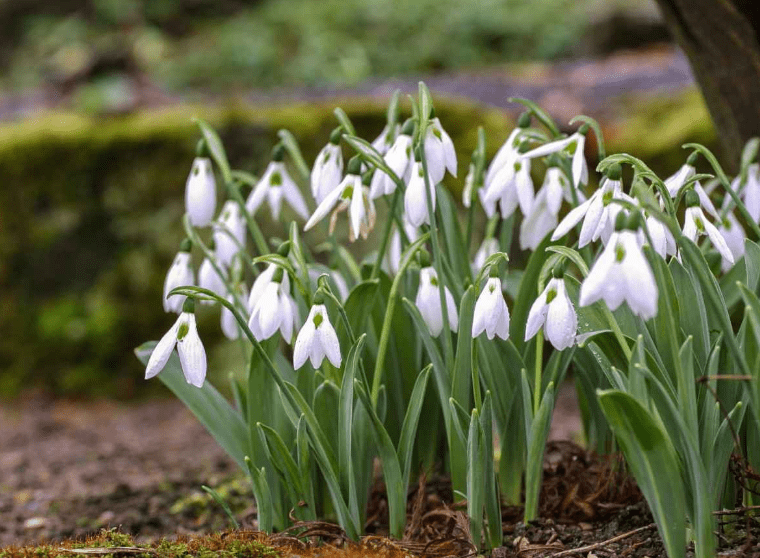
3. Recommended planting patterns (single vs. clusters)
For a truly eye-catching display, consider planting your snowflake flowers in clusters rather than single bulbs. Planting in clusters will create a more natural and impactful look, with multiple blooms grouped together for a stunning visual effect. This will create a beautiful carpet of delicate white flowers that is sure to impress anyone who sees it.
C. Choosing and Preparing Bulbs
When it comes to planting your snowflake flowers, spacing is key. By spacing the bulbs about 4-6 inches apart, you are giving them the room they need to grow and flourish. This will ensure that each flower has the space it needs to reach its full potential and show off its mesmerizing blooms.
By planting in clusters rather than single bulbs, you can create a truly show-stopping display. Picture a carpet of delicate white flowers, all blooming together in harmony. This will make a much bigger impact and give your garden a stunning visual effect that will be the envy of all who see it.
So, when it comes to planting your snowflake flowers, remember that proper spacing and planting in clusters will ensure that your garden is a sight to behold. Don’t miss out on the opportunity to create a breathtaking display that will leave everyone in awe. Happy planting!
Watering and Fertilization
A. Watering Needs
When it comes to watering your snowflake flowers, it is important to ensure that they receive adequate moisture. Proper watering will help your plants to thrive and produce beautiful blooms. Be sure to water consistently and deeply, especially during dry spells, to keep the soil moist.
B. Fertilization
In order to encourage healthy growth and abundant flowering, it is essential to provide your snowflake flowers with the proper nutrients. Use a balanced, slow-release fertilizer to nourish your plants throughout the growing season. This will help to ensure that your snowflake flowers are strong, vigorous, and ready to put on a stunning display.
By paying attention to the watering and fertilization needs of your snowflake flowers, you can be sure to create a show-stopping garden that will be the envy of all who see it. So don’t miss out on the opportunity to create a breathtaking display – make sure to give your snowflakes the care and attention they need to flourish. Happy gardening!
Maintenance and Care
A. Pruning and Deadheading
It is crucial to stay on top of pruning and deadheading in order to keep your garden looking its best. Regular pruning will help to keep your plants healthy and shapely, while deadheading will encourage continuous blooming and prevent your plants from wasting valuable energy on producing seeds. By maintaining a regular pruning and deadheading schedule, you can ensure that your garden remains vibrant and beautiful all season long. So don’t neglect this important aspect of garden maintenance – make sure to keep up with pruning and deadheading to keep your garden looking its absolute best!
B. Pest and Disease Management
Pest and disease management is essential for the health and longevity of your garden. Ignoring the presence of pests and diseases can result in irreversible damage to your plants, and ultimately, the demise of your beautiful garden. By practicing proactive pest and disease management, such as regularly inspecting your plants for signs of trouble and taking swift action to address any issues, you can effectively prevent infestations and infections from taking hold. Don’t let pests and diseases ruin all of your hard work – be diligent in managing and preventing these potential threats to your garden’s well-being. Your garden will thank you for it!
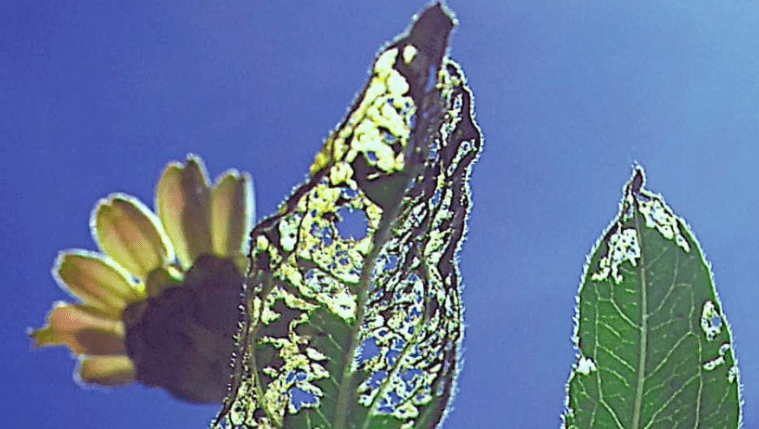
Seasonal Care Tips
A. Winter Care
As the seasons change and winter approaches, it’s crucial to take the necessary steps to protect your garden from the harsh conditions. From covering vulnerable plants to insulating the soil, proper winter care is essential for the survival of your garden. So don’t overlook this important aspect of garden maintenance – make sure to prepare your garden for the winter months to ensure its health and vitality come springtime. Your garden will thrive and thank you for the extra care and attention during the cold winter season.
B. Spring and Summer Care
Now that spring and summer are upon us, it’s time to give your garden the love and care it deserves. From regular watering and weeding to fertilizing and pruning, there’s no shortage of tasks to keep your garden in tip-top shape. By staying on top of seasonal care, you’ll be rewarded with a flourishing and vibrant garden that will be the envy of your neighborhood. So don’t let your garden go neglected – take the time to provide it with the care it needs and watch as it blooms and thrives in the warm spring and summer months. Your garden will thank you for it!
Troubleshooting Common Issues
A. Poor Blooming
Are you tired of looking at a lackluster garden with few blooms? It’s time to take action and troubleshoot the common issues that may be preventing your garden from reaching its full potential. Whether it’s inadequate sunlight, improper pruning, or nutrient deficiencies, there are solutions available to help your garden thrive. By identifying and addressing these issues, you can ensure that your garden is bursting with color and beauty all season long. So don’t settle for poor blooming – take the time to troubleshoot and make the necessary adjustments to see your garden at its best. You deserve a garden that brings joy and beauty to your outdoor space, and with a little troubleshooting, you can achieve just that. Let’s turn that lackluster garden into a blooming oasis!
B. Yellowing Leaves or Wilting
Don’t let yellowing leaves and wilting plants bring down the overall appeal of your garden. It’s time to take action and troubleshoot the common issues that may be causing this problem. It could be a sign of nutrient deficiencies, overwatering, or even pest infestations. By identifying the root cause and addressing it, you can ensure that your plants are healthy and vibrant.
So, let’s not settle for lackluster foliage – let’s take the time to troubleshoot and revitalize your garden. Your plants deserve to be thriving and bringing life to your outdoor space. With a little troubleshooting and care, you can turn those wilting leaves into lush, green foliage. It’s time to breathe new life into your garden and watch it flourish like never before. Don’t wait any longer – take action now and see the transformation for yourself!
C. Bulb Rot
Root rot is a common issue that can cause wilting and lackluster foliage in your plants. By identifying and addressing this root cause, you can ensure that your garden is vibrant and healthy. Don’t settle for wilted leaves – take the time to troubleshoot and revitalize your garden. Your plants deserve to thrive and bring life to your outdoor space. With a little care and attention, you can turn those wilting leaves into lush, green foliage. It’s time to breathe new life into your garden and watch it flourish like never before. So, don’t wait any longer – take action now and see the transformation for yourself!
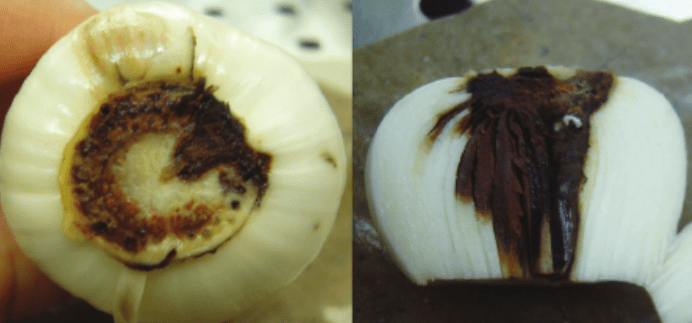
Enhancing Your Garden with Snowflake Flowers
A. Companion Plants
Snowflake flowers are a stunning addition to any garden, but they can also benefit from companion plants. By incorporating other plants that complement and support the growth of snowflake flowers, you can ensure a more vibrant and thriving garden. Don’t just settle for snowflake flowers on their own – take the time to plan and plant companion plants that will enhance the beauty and health of your garden. Your snowflake flowers deserve to be surrounded by a harmonious and supportive environment, and by choosing the right companion plants, you can achieve just that. So, don’t hesitate to enhance your garden with the perfect companions for your snowflake flowers. Your garden will thank you for it!
B. Design Tips
When it comes to caring for snowflake flowers, design is key. You want to create a visually appealing and harmonious garden space that highlights the beauty of your snowflake flowers. Consider incorporating a variety of colors, textures, and heights to create a dynamic and eye-catching display. You can also play with different shapes and patterns to create visual interest. Don’t be afraid to get creative and experiment with different design elements to create a garden that truly showcases the beauty of your snowflake flowers. By putting thought and effort into the design of your garden, you can create a stunning and inviting space that will be the envy of all your neighbors. So take the time to plan and design your garden to make the most of your beautiful snowflake flowers – you won’t regret it!
In conclusion, caring for snowflake flowers requires attention to detail, proper watering, and the right amount of sunlight. It’s important to provide the right environment for these delicate flowers to thrive. With the right care and attention, you can enjoy beautiful blooms in your garden all season long. Don’t underestimate the power of proper flower care and the impact it can have on the beauty of your garden. Take the time to follow these expert tips and watch your snowflake flowers flourish. Your garden will thank you for it!
Frequently Asked Questions (FAQs)
The best way to plant snowflake flowers is to choose a location with well-drained soil and partial to full sunlight. Plant the bulbs in the fall, about 2-3 inches deep and 4-6 inches apart.
Snowflake flowers prefer moist soil, so it’s important to water them regularly, especially during dry periods. However, be careful not to overwater as this can cause the bulbs to rot.
Yes, snowflake flowers can benefit from a balanced fertilizer in the spring when they are actively growing. Be sure to follow the instructions on the fertilizer package and avoid over-fertilizing.
Snowflake flowers are susceptible to pests such as aphids, snails, and slugs. They can also be affected by diseases like botrytis and powdery mildew. It’s important to monitor your plants and address any pest or disease issues promptly.
Yes, snowflake flowers can be grown in containers as long as the container has good drainage. Use a well-draining potting mix and place the container in a location with adequate sunlight.
After the flowers have finished blooming, allow the foliage to die back naturally. This allows the plant to store energy for the next year’s blooms. You can also remove any spent flowers to encourage more blooms.
Snowflake flowers are hardy and can withstand cold temperatures, but it’s important to provide some protection during extreme cold spells, especially if the plants are newly planted or in containers.
Snowflake flowers are generally considered deer-resistant due to their toxic properties, but it’s always a good idea to take precautions if deer are prevalent in your area. Consider using deer-resistant fencing or repellents if necessary.
